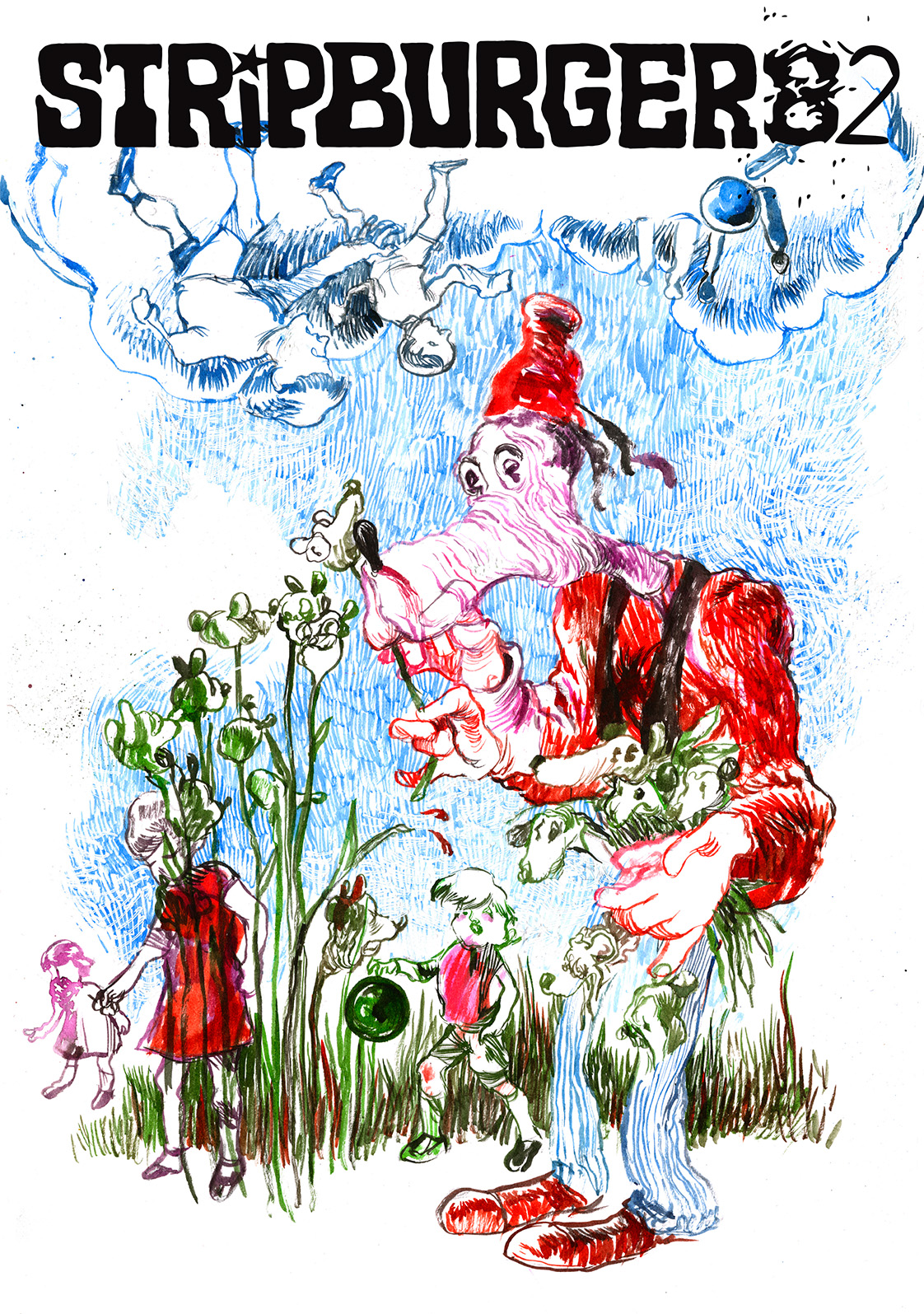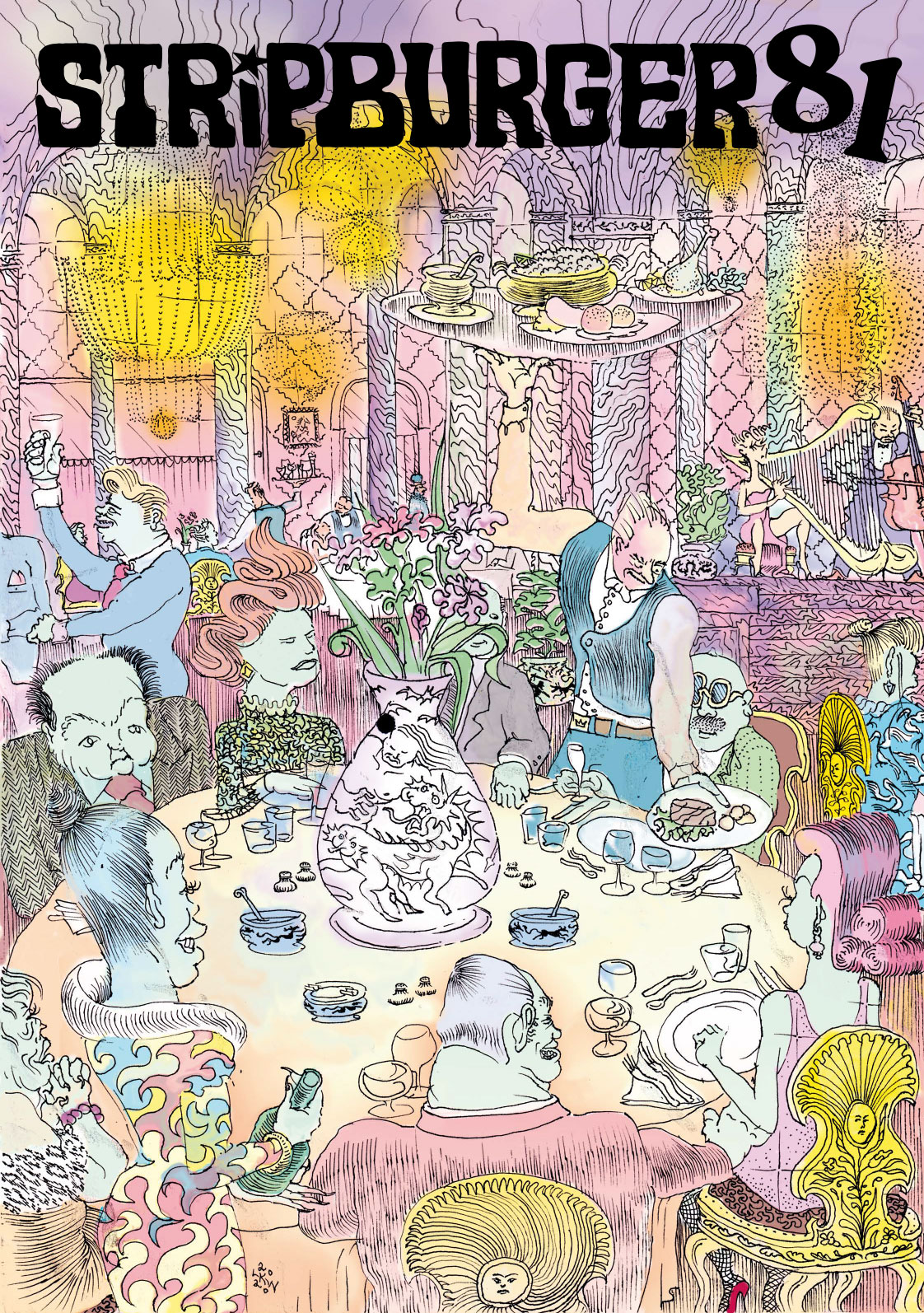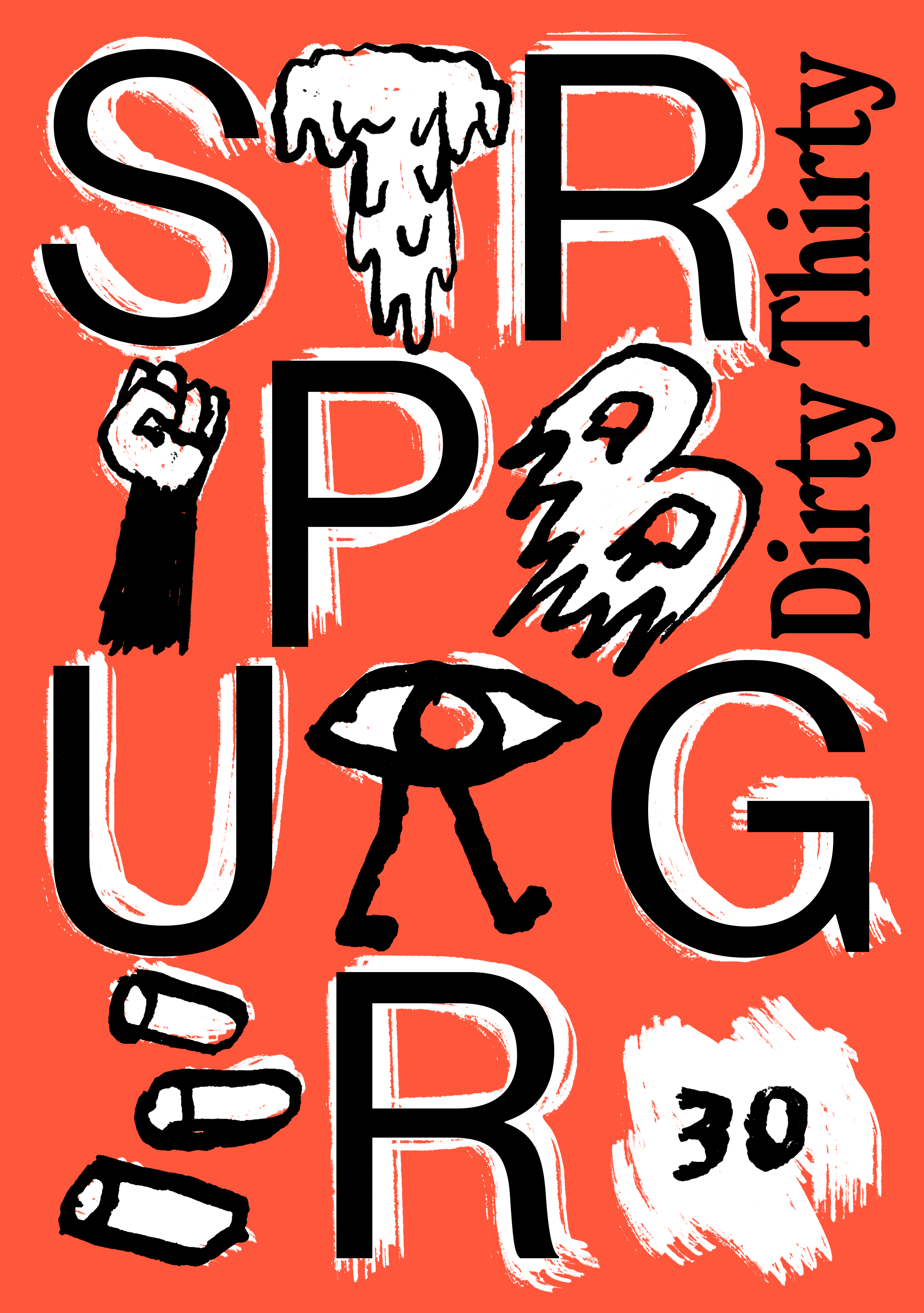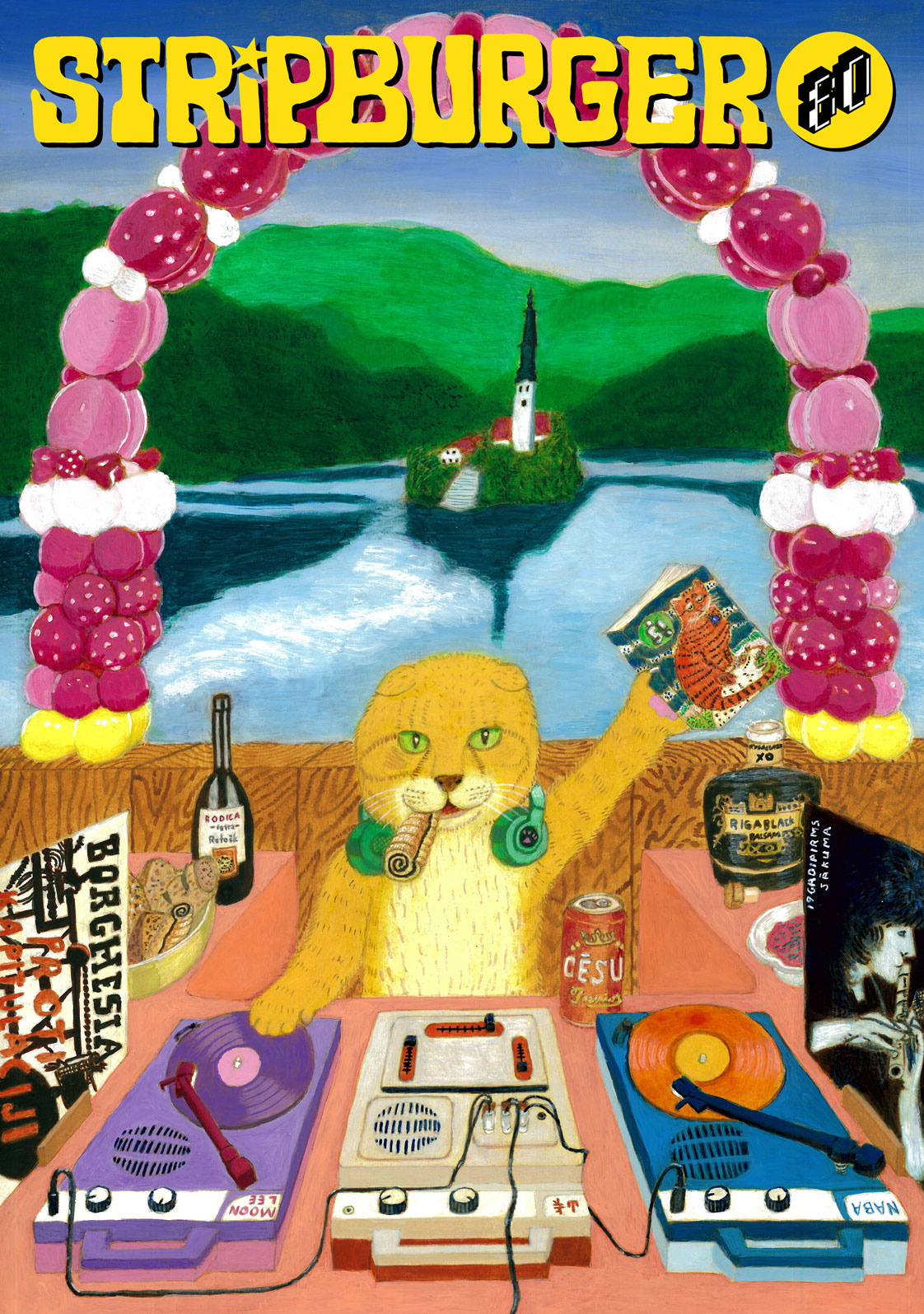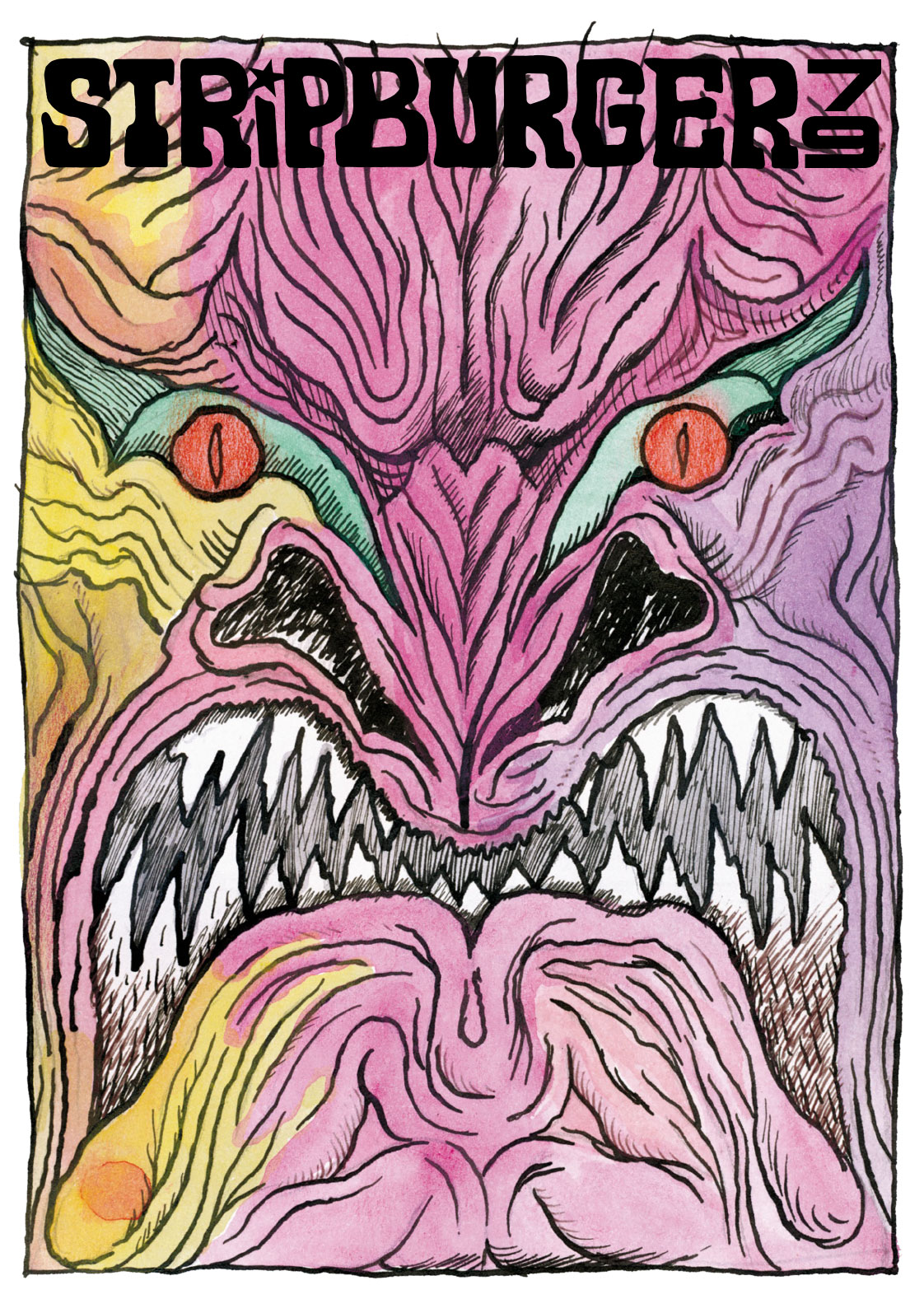
Everybody have read him everybody knows him; some of you even missed him. Danilo Milošev, AKA Wostok, AKA Mediocre, the most famous citizen of Vršac that was published in Stripburger, returns to the scene after years of silence more bizarre than ever. With incredible speed he managed to compensate for the time that was lost, as he is known to be one of the most prolific authors of the Balkans and Asia Minor. With his comics, movies, music and multimedia projects, he is trying to re-energize the comic scene. Before his visit in Ljubljana in October, he is once again introduced on pages of Stripburger. Ivan Mitrevski invited him for a chat.
Readers of Stripburger mostly know you, although it’s been some years since you’ve been published here. The first news from you is surely the Ilegalni imigranti affair (Illegal Immigrants). What really happened and how did it end? As far as I know, the affair encompassed the whole comic scene, you’ve been attacked from all sides and in the end, everything was settled by Rambo Amadeus.
Well, this whole case showed how much can internet do for the promotion of alternative comics.(Illegal Immigrants are available for download at the Stripburger’s web. In fact, the Illegal Immigrants almost don’t exist on paper – there’s only six or seven photocopied issues of Krpelj, number 400. Despite the fact that it almost doesn’t exist in a physical sense, it became one of the most notorious and most read comics around here! Everything began in 2004, as my brother put it out on his website and advertised it on the comic webzine Strip Vesti (Comic News). After that, the reaction from Dejan Stojijković, the enfant terrible among the Serbian comic critics, followed. Stojilković verbally massacred the comic. A bunch of other critiques, mostly negative came soon afterwards. One year later, after things finally settled down, me and my brother decided to publish all the reviews on our website and invited the public to read about the polemics around the »most hated, most spat-on and most despised comic in the history of Serbian comics«. At this point, Rambo Amadeus contacted me and said that the comic was »top class« and »cool« and asked me to send it to him in high resolution, so he could print it and show it to his friends. That, all of the other fans stepped up and in the end there was a total turnover in the evaluation of Illegal Immigrants.
So, the moral of this story is, comic artist needs to find a celebrity ally so he or she can continue working. But the Immigrant story goes on. You published a few versions of Illegal Immigrants on our website, some kind of meta-comics, made by other artists. How does the story end, what happens to our Immigrants?
P.S.: Did Rambo actually print the comic?
I’m not sure! But thanks to him, this comic succeeded in breaking the barriers of the closed up comic scene and managed to excite the interest of people who know nothing about comics. You know the complaining about how fewer and fewer people are reading comics, how circulations are dropping, things you’ve been hearing for ages. Of course less and less people are reading comics and sales have been dropping, there are more and more cliché comics, predictable, boring comics, almost dead comics. Kudos to the rare exceptions!
No matter how critical you are toward the Immigrants, you still have to admit they have some sort of raw, wild original energy. Some kind of tension, intensity and excitement. I even think (however strange this may seem) Disney characters somehow regained their dignity. For the first time, after decades of empty dialogues, they spoke up with a realistic, lively voice. As if these average, bland characters once again became real persons, even though that makes them idiots, morons and retards. To people with at least a little bit of heart, they will grow on them and seem nicer than before, when they were ‘normal’. Don’t you think?
I admit, I hade quite a few good laughs when I was drawing them, but felt a little bad about the ending of the 1st episode. Lucky for them they were fount by those necrophiliacs and put them back in action! Heh, heh. The Odyssey continues. A new, 45-paged, multi-artist comic is being made at the moment, called Trpljenje mladega ilegalnega imigranta (The Sorrows of Young Illegal Immigrant). This comic is actually a parody of some South-American soap opera.
As far as Rambo is concerned, I don’t know if he printed the comic. But he did so much for the Illegal Immigrants; he deserves a Medal of Honor of the Illegal Immigrants of the first order with X-rays.
It seems every comic action you come up with, attracts a lot of comic artists. A large part of your late works (which will be some day cited as ‘Wostok’s mature period’ in encyclopedias) is activist. You are using internet, the work is fast, communicative, accessible… It’s some sort of comic activism.
Yes, this is quite different from my beginnings. If you consider I started drawing in early 90s, and using in some kind of, so to speak, gothic style. It took me three or four months to draw an eight pager! A little later, thing started to go faster.
As I look back now, it seems I kind of leaned toward trash in those days. For example, in elementary school, I and my school mate were creating a brutal parody of Veliki Blek (a popular mainstream comic in Yugoslavia). But then there was a need to draw, to express some dark, part of my personality. At 16, I was already drawing black and white comics with distinctive contrasts. Maybe this has something to do with the town I am originally from and in which I spent my whole life. In the city’s cultural and historical base there is some kind of unusual mixture of German, Slavic, Romanic and Balkan culture. Indeed, this little town called Vršac is quite unusual and has even more unusual inhabitants. Once, a Belgrade reporter asked me, if Vršac really was known as ‘the Serbian Twin Peaks’.
Did you make the movie, in which the author is filming his father who is trying to unplug the toilet and cursing heavily?
Yes! The film was made in 1998, a shitty year for Serbia, as Miloševič’s politic was pushed to the extremes as well as international politics. One could feel some kind of evil which resulted in the bombing of Serbia a few years later.
But more than anything, I was testing an old VHS camera. I’ve seen Boča (the father) was fightup toilet. Then, as it could be seen and heard in the movie, he started a monologue about the whole thing. This is what independent comics should probably look like. Artist should look for authentic people and record their intensity of their authentic existence to the maximum. And stop worrying about the script, directing, production, reviews and appraisal.
Special attention should be paid to Krpelj: if it weren’t a fanzine, it would be an institution. The last issue I’ve read was the famous number 400. Are you still making these? Did it ever feature any Slovene artists?
Krpelj reached around 460 issues, or over 600, if we consider web issues as well. There were Slovenes in it, of course. There was Obscurator, for me the single most important Slovene artist. I’ve translated and published some comics by Matjaž Bertoncelj who have –at least in my opinion- included a strong sense of humor and communication, which underground comics, who like to wander into an air-tightness and egoistic self-satisfaction, often lack. Oh, and I managed to talk Igor Prassel into drawing a picture or two for comic jam session Gusle v kozmosu , part 2 (Fiddle in Space). I’m not sure if he drew anything after that.
Is it just me, or did people around the world stop making fanzines? Only in Serbia one can find a whole bunch of photocopied fanzines, amateur artists, it seems people are still into such things. How would you explain this interest?
I don’t know the reason for this. Maybe because there is still some chaos in Serbia and we still struggle with a bunch of basic things. The mentality of the people, maybe? But let me ask you: How is it possible that in a small country like Slovenia, that has virtually no comic tradition, there’s a magazine like Stripburger, a project that even bigger comic countries can’t have? Where’s the reason for this? Sometimes a question can be answered by another question that might help to introduce the complexity of a situation.
I’d say there’s a certain number of people that like that Balkan authenticity, a Slavic soul and such, but I guess this is only an excuse for the fact, we really have no answer.
In spite all, there are a lot of local issues, questions and local specialties in your comics. You were published abroad too, but I think you might be quite hard to understand outside your region.
I’ve been published in Great Britain, the Netherlands, Italy, Greece, France, USA. In England they even published my album in 1998, which contained a preface by Jim Woodring. But it’s mostly my fault there’s no considerable continuity in my publications outside Serbia. When I was younger, I was leaning towards depression and heavy disappointments, so I used to close up and reject the communication with the outside world. I even destroyed my older works. Maybe that’s a part of Vršac’s mentality and psyche – a part of some kind of isolation on my own planet. But the need for communication has always returned. My whole, let’s say, ‘artistic work’ could be described as an attempt to communicate and discover my faces and the world as it is.
It’s interesting that my comic Dog and Man: Best Friends was first published by Stripburger in 1995, then the Dutch magazine Thank God it’s Ugly in 1998 and the Italian Inguine published it this year. I thought of this comic as too local and that it won’t be understood by people in Western Europe. But of both comics made after Kafka’s stories, this one caught the eye of most editors. I think that comprehensibility and incomprehensibility are relative and that they can twist and turn. What I resent myself the most is that I never tried harder to present my work. Outside of my country, as well as in Serbia. If there wasn’t for Zograf it would probably take me ages to publish something, closed up in Vršac. Nowadays I try to be opened and communicative, mostly with the help of my computer.
What about your cooperation with your father in the movies? You and your brother have Tehno muda (Techno Bollocks, a music project), and with your father you have movies and comics. You’re a kind of underground family.
This thing with my father seems to have happened quite unexpectedly. But. Looking back at my childhood, my father has always been a dreamer, a quite unusual person. Every night he would tell us bizarre and unusual versions of fairy tales. He always had this stroke of bizarre… But when he was younger, he couldn’t express his eccentric artistic pretensions. So as he became pensioner, he got the opportunity to explore the world of underground comics, music and movies. This authentic energy of his was acknowledged and welcomed by young people, who were into the alternative multimedia scene at the time. He says he started living after he turned 60, as he got the opportunity to reveal himself. Then there’s my brother, with whom I do a project together from time to time, like Tehno muda and Etno muda. Before that there was some collaboration with my daughter Lola who made all of her most important works by the age of six. Now she’s resting on old glory. Ha!

